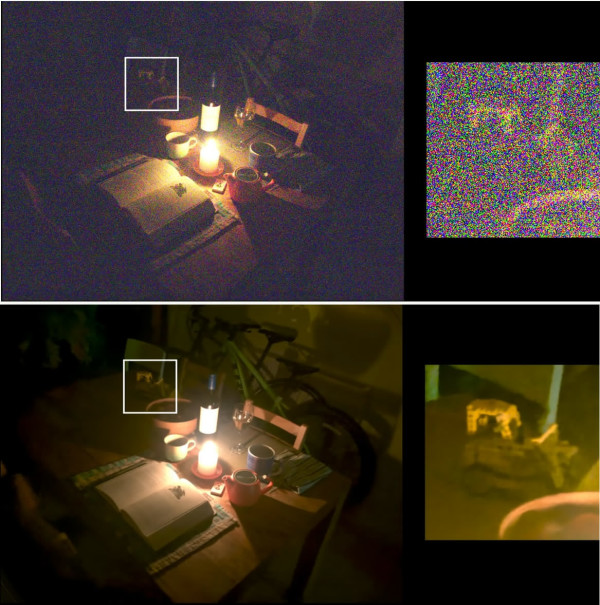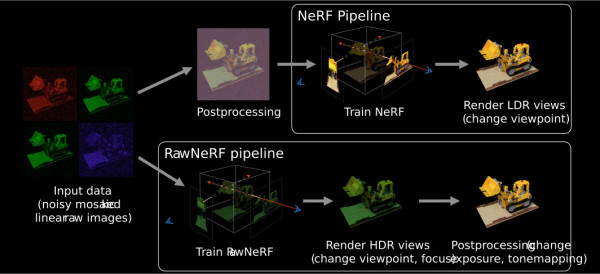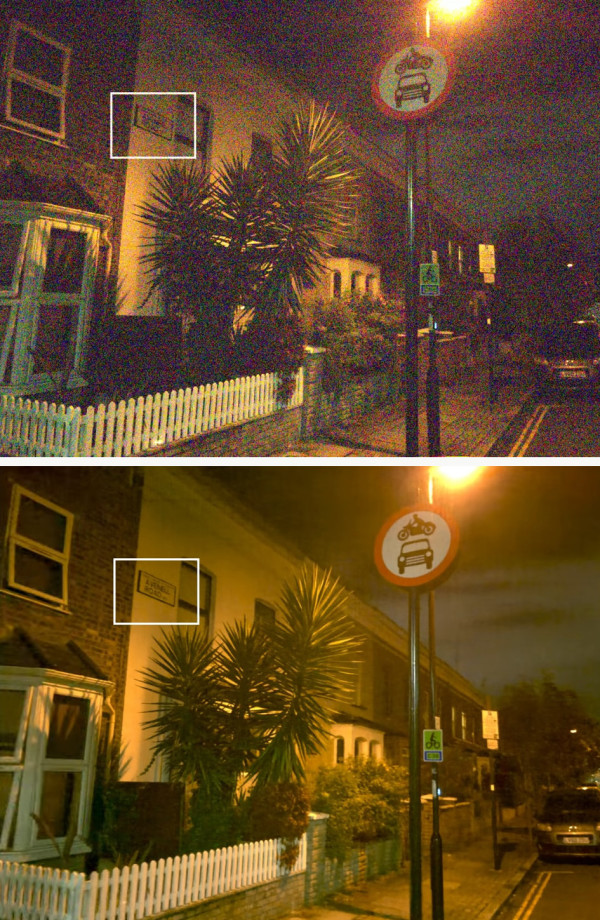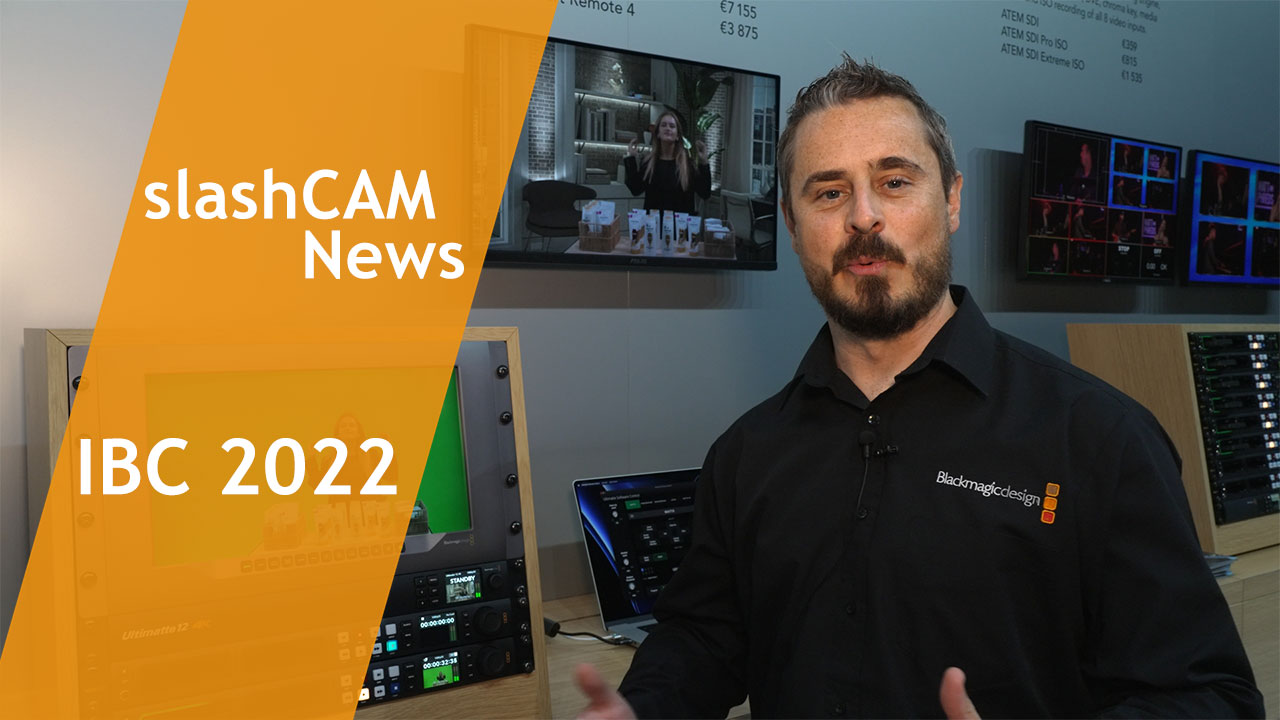[14:23 Sun,28.August 2022 by Thomas Richter] |
A team of Google researchers has developed an algorithm that can use multiple (noisy) RAW photos of a dark scene taken from different angles to generate low-noise, brighter images that show much more detail than the original photos. The new,  Demo of RawNeRF The new method, called RawNeRF, complements the previous algorithm so that it can create new synthetic views that also use noisy RAW raw material. It is demonstrated, among other things, using the example of a scene photographed with a smartphone and lit only by a candle. The smartphone does produce a fairly vivid image, but at the cost of losing a lot of detail. The RAW version of the photo, on the other hand, shows much more detail when the brightness of the image is increased, but at the cost of much more noise. When the images are fed into the RawNeRF algorithm, clear bright images are generated - or, if desired, a virtual tracking shot that shows the original dark scene, along with the otherwise hard-to-see objects, much brighter and without image noise. RawNeRF uses a relatively large amount of noisy RAW photos (25-200) and, according to the researchers, outperforms dedicated  But the method is not limited to that - it offers other interesting possibilities to change the representation of the newly synthesized view: for example, not only the perspective, but also the exposure of the scene, the tone mapping as well as the focus can be changed dynamically afterwards. So the new algorithm can be used to create interesting animations of photos, but for filmmakers it might be especially interesting to apply the denoising method also to low-light (RAW) videos of dark scenes with a lot of noise, which are nothing else than sequences of single frames. Although the image sensors of professional cameras are much larger and thus more light-sensitive than those of smartphone cameras, the method should also enable significant image improvements of dark images here. Here is the as always very entertaining and educational presentation of MultiNeRF by "2 Minute Papers": Experience shows that useful new image techniques from research will soon find their way into commercial (or even open source) software for the user - so we can hope for high-quality denoising of even low-light photos or videos soon.  deutsche Version dieser Seite: Neue Google KI entrauscht RAW Photos dunkler Szenen perfekt - bald auch Videos? |





